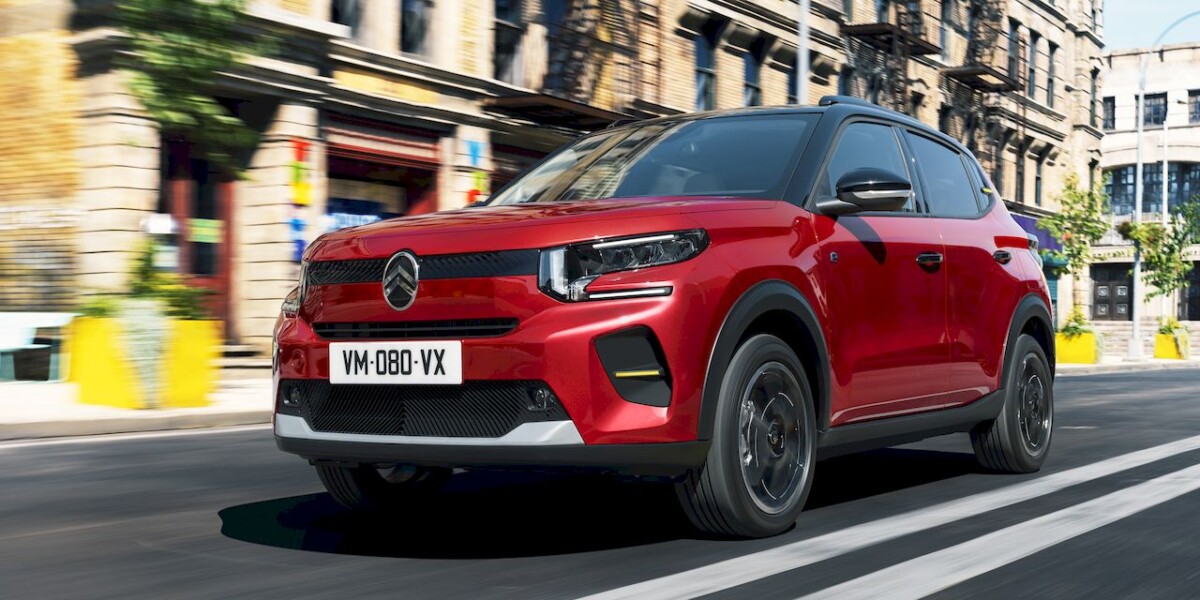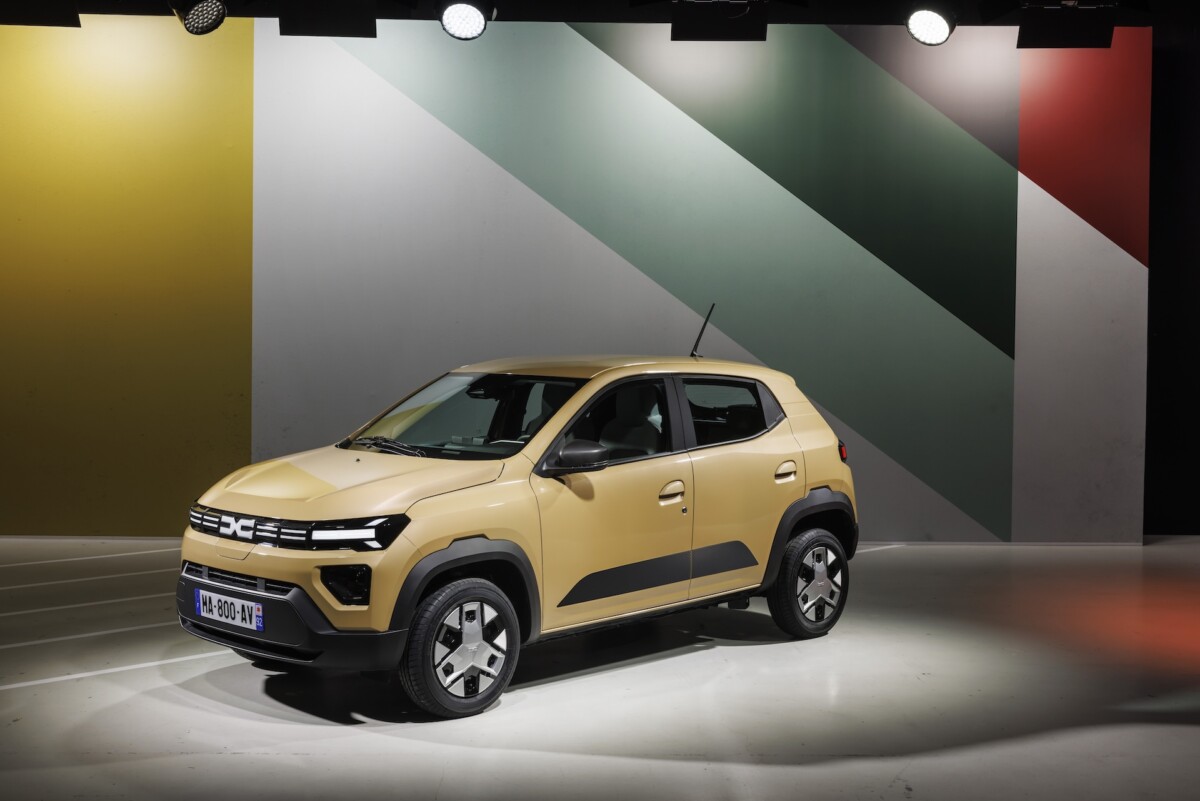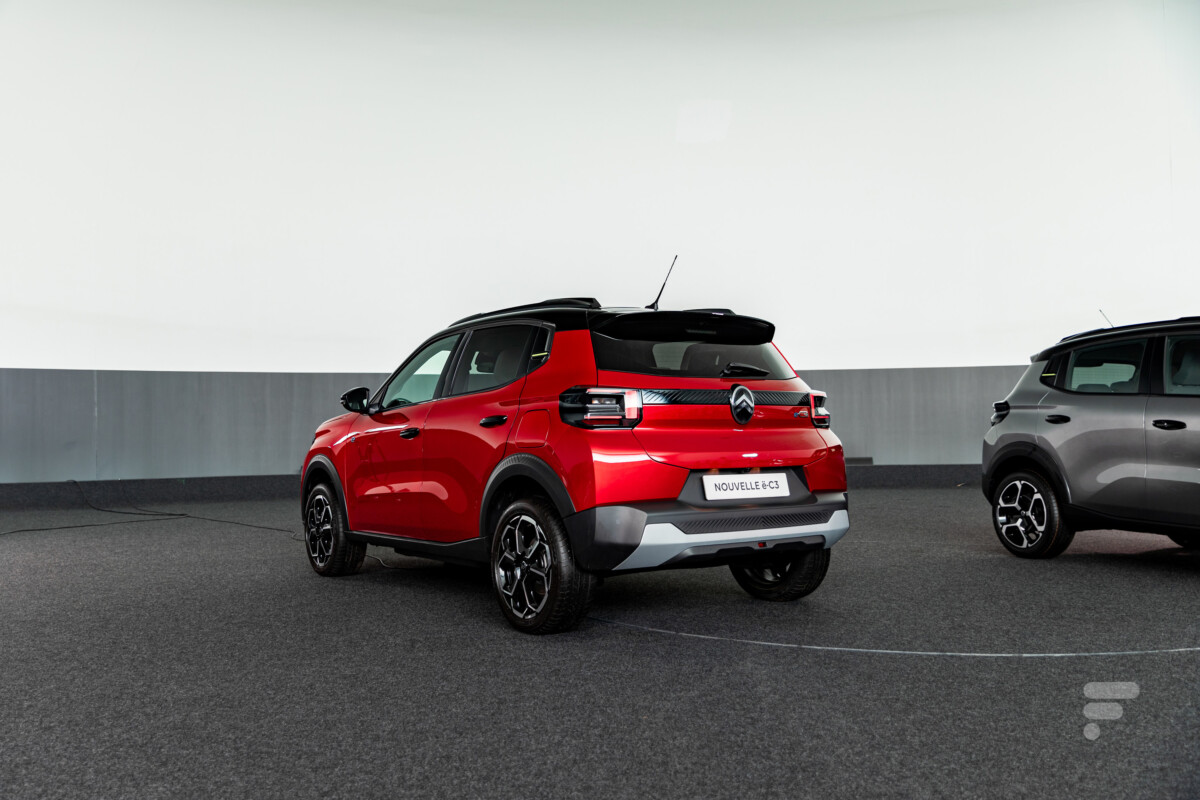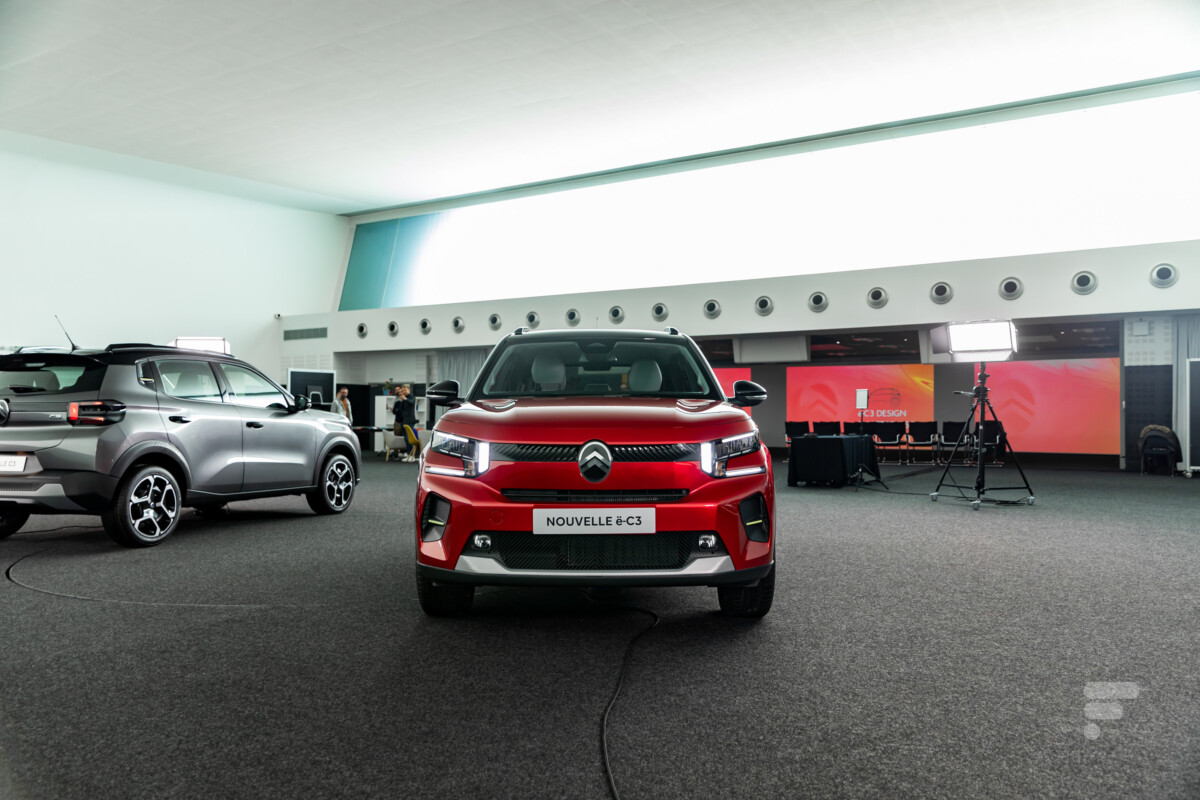If the Dacia Spring has long been the cheapest electric car in France, the new Citroën ë-C3 intends to steal customers. The restyled version of the small Dacia was presented in February 2024, and we now know its prices: the perfect opportunity to compare these two electric city cars. Price, performance, autonomy, habitability, equipment: everything goes!
When the Dacia Spring arrived on the market in 2021, its unbeatable price (16,990 euros excluding bonus) opened the doors to a small success, with 140,000 copies sold. The competition took time to respond, but it was Citroën which reacted first, with its ë-C3which will hit the roads in June 2024.
Dacia therefore reacted and offered a makeover to its small electric city car in February 2024. We went to see it, but we were missing a fundamental component for this type of car: its price. Good news: the pricing for Spring “2.0” is now official, allowing us to compare the Dacia and the Citroën from every angle.
Data sheets
| Model | Dacia Spring (2024) | Citroën ë-C3 |
|---|---|---|
| Dimensions | 3.70m x 1.58m x 1.51m | 4.01m x 1.76m x 1.57m |
| Power (horsepower) | 65 horses | 113 horses |
| 0 to 100km/h | 13.7 sec | 11 sec |
| Level of autonomy | Assisted driving (level 1) | Assisted driving (level 1) |
| Maximum speed | 125 km/h | 135 km/h |
| Main screen size | 10 inches | 10.25 inches |
| Car side socket | Type 2 Combo (CCS) | Type 2 Combo (CCS) |
| Entry-level price | 18900 euros | 23,300 euros |
Product sheet | Product sheet |
Exterior dimensions/style: SUV style
If these two cars have one thing in common, it’s very “SUV” spirit of their bodies. Both on the Citroën ë-C3 and the new Dacia Spring, the lines are straight, the shields prominent, the body passages protected, the massive volumes, in short, the style is there to reassure.

Citroën ë-C3 // Source: Marie Lizak for Frandroid

Dacia Spring // Source: Dacia
The big difference is of course at the level of template. If the electric C3 has the dimensions of a segment B car, with 4.01 m long and 1.76 m wide, the Spring evolves more at segment A level, with 3.70 m long (-31 cm!) for 1.58 m wide (-20cm).

Dacia Spring // Source: Dacia

Citroën ë-C3 // Source: Marie Lizak for Frandroid
One caliber less for the Dacia, therefore, which should prove to be an advantage in town, with great ease of parking. It remains to be seen whether this reduced scale has an impact on habitability and trunk volume.
Habitability: the Spring surprises
As we have seen, the electric Dacia is much smaller than the Citroën. Surprisingly: this observation is not found at all in terms of trunk volume! Where the C3 electric propose 310 litersthere Spring advance 308 litersdespite, once again, 31 cm less in length.
Where things become even more interesting is that Dacia offers as an accessory a small tray to be fixed under the hood, enough to create a frunk of 35 liters ! With 343 liters in totalthe Spring offers storage space worthy of a compact.

Citroën ë-C3 // Source: Marie Lizak for Frandroid

Dacia Spring // Source: Robin Wycke – Frandroid

Dacia Spring // Source: Robin Wycke – Frandroid

Dacia Spring // Source: Robin Wycke – Frandroid
In the passenger compartment, on the other hand, the difference in size is felt a little more, particularly at the rear. The Spring can only carry two passengers on the bench seat, making it a four seatswhile the ë-C3 is approved in five seatswith three passengers in the back.
Finally, note that the Citroën aims to be more considerate in terms of comfort, with seats “Advanced Comfort” padded at the front and its softer suspensions.
Technologies: basic, but sufficient
As you can imagine: with such tight prices, the electric Citroën and Dacia are not going to offer the latest technologies on the market. This does not mean, however, that these two electric cars are at a discount.
Thus, both the ë-C3 and the Spring can offer connected screens, 10.25 inches for the Citroën and 10 inches for the Dacia. Both offer connected navigation, as well as compatibility with Android Auto and wireless Apple CarPlay.

Dacia Spring // Source: Dacia

Citroën ë-C3 // Source: Marie Lizak for Frandroid
Be careful, however: on the “first price” versions of these two models, the screens… disappear. To play music, you will therefore have to use its smartphone, which can connect via Bluetooth (for the Spring) or NFC (for the electric C3) to the car. You will be able to control it via the steering wheel controls, for example.
Concerning the meters, the two city cars offer different choices. Where the Spring offers, in a completely classic way, a 7 inch screen behind the wheel, Citroën innovates and equips its electric C3 with a head-up display which is reflected in the upper part of the dashboard.

Citroën ë-C3 // Source: Marie Lizak for Frandroid

Dacia Spring // Source: Dacia
In terms of driving aids, here too, it is minimum service. We will not go further than a cruise control (non-adaptive) or a reversing camera. No need for more, since these two city cars are above all designed for short journeys.
Engine, battery, autonomy: the ë-C3 takes off
The fundamental difference between the Citroën and the Dacia is in terms of mechanics. This summary table speaks for itself:
| Dacia Spring | Citroën ë-C3 | |
|---|---|---|
| Power (hp) | 65 | 113 |
| 0-100 km/h (s) | 14 | 11 |
| Max speed (km/h) | 125 | 135 |
| Battery capacity (kWh) | 26.8 | 44 |
| WLTP range (km) | 225 | 320 |
| Fast charging power (kW) | 30 | 100 |
| Cooldown time 20-80% (minutes) | 45 | 26 |
In almost all of these categories, the electric Citroën C3 proves to be much more versatile than little Spring. With a more powerful engine and superior performance, the Citroën will be more at ease outside of cities, where the Dacia will stick out its tongue.
Big differences in terms of battery too, with a much better equipped C3 (17 kWh differenceor 61% difference), allowing greater distances to be covered (95 km/+70% additional autonomy).

The final blow is at the recharge level. The ë-C3 can be recharged on a fast terminal from 20 to 80% in 26 minutes thanks to its 100 kW charger, where the Spring requires 45 minutes. That’s almost double, despite a much smaller battery!
The culprit: the charger, limited to 30 kW on the Spring. And again, this charger is only one option on the high-end version, and is completely not available on the “low price” version… where the C3 offers fast charging series on all versions.

In short, weekend departures are much more possible with the electric C3 than with the Spring, which will remain confined to daily trips.
Prices: the Dacia cheaper, despite the loss of the bonus
The 2024 revision of the ecological bonus hurt the Dacia Spring. The implementation of the environmental score now excludes from the system electric cars produced in China… which is its case. The Citroën ë-C3, on the other hand, is not worried, due to its assembly in Trnava, Slovakia.
There C3 electric can therefore count on the 4,000 euros of government aid for all, which can even increase to 7,000 euros for the least well-off households. With the “standard” bonus, it is displayed from 19,300 euros in an entry-level version, called “You”. As for the “Max” version, fully equipped, it will cost 23,800 euros, bonus deducted.

Aggressive prices, therefore… but which remain above those of the Spring, despite losing his bonus. The electric Dacia is thus beginning to 18,900 euros in “Expression” finish, and asks 19,900 euros for the “Extreme” version, better equipped.
The two entry-level versions are quite similarly equipped, with air conditioning, cruise control, rear parking assistance, automatic braking, 16-inch hubcaps… and the absence of a central screen, therefore. However, let us keep in mind the presence of fast charger on the electric C3, while the Spring has to make do with 7.2 kW maximum.

In the “top-of-the-range” version, the two city cars have the central screen and the reversing camera, but the Citroën plays it dapper with alloy rims and two-tone paint, while the Dacia prefers to play it practical by offering the bidirectional charging, capable of powering electronic devices from its battery.
Bottom line: a more expensive C3, but more versatile
What can we learn from this theoretical comparison? You will have understood: of course, the Dacia Spring remains the cheapest electric car in Francebut the Citroën ë-C3 offers serious argumentsespecially in terms of versatility.

With an extra place, superior performance, more generous autonomy and real fast charging capabilities, the electric C3 proves to be much more capable of handling long journeyswhere the Spring will hardly be able overcome the city barriers.
It’s up to you, therefore, according to your needs and your budget. There remains one crucial point: our impressions behind the wheel of these two inexpensive electric cars. We look forward to seeing you at the tests, which should take place in the coming weeks, to get the end of the story.
Did you know ? Google News lets you choose your media. Don’t miss Frandroid and Numerama.
